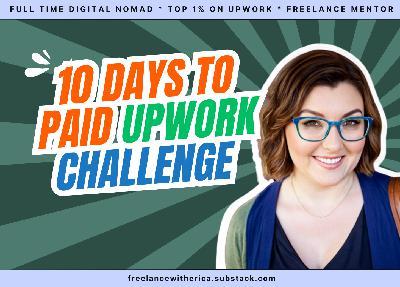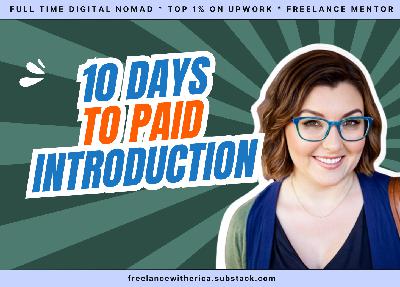The Secret Formula to Getting Your Proposals ACTUALLY SEEN on Upwork 👀
Description
You can be the most talented freelancer on the planet, but it won't matter if no one ever sees your proposals. 🙈
I'm just going to come right out and say it: As a beginner on Upwork, almost EVERYTHING is working against you.
You've got:
* ZERO clients
* ZERO reviews
* ZERO portfolio items
* A profile that basically screams "I HAVE NEVER DONE THIS BEFORE!"
And to make matters worse, you're competing against established freelancers with page after page of 5-star reviews and impressive stats.
Cue existential crisis for most beginners.
The Proof This Actually Works (Not Just Theory)
I don't just talk a big game – I've got the receipts. 💅 I know firsthand that breaking through is 100% possible. Why? Because I did it myself (going from healthcare administration to sales copywriting with ZERO freelance or copywriting experience).
And right now, I'm in the middle of the 10 Days to Paid Challenge, where I'm helping complete beginners land their first paying gigs and 5-star reviews. And to prove my methods work, I had my 22-year-old kiddo (a Starbucks barista with zero freelance experience) follow the program so we could document his journey.
The results?
* May 10th: Sent his first batch of Upwork proposals
* May 16th: Landed his first client
That's SIX DAYS from complete newbie to paid freelancer.
And here's the kicker: The job he landed had 20-50 other proposals... and he was the ONLY ONE the client messaged and hired.
(Spoiler alert for the handful of you already in the challenge – Day 6 is coming soon with all the exciting behind-the-scenes details of River's first client experience! It's taking forever to edit because Upwork's terms prohibit sharing client info without permission, so I'm basically pretending to be a video editor now. Send help. And caffeine. It's like trying to give birth to a porcupine. 😅)
The Brutal Truth About Job Applications
You craft these beautiful, thoughtful proposals... and then crickets. But what if I told you the problem isn't your experience, your portfolio, or even your rates?
Here's something most freelancers don't know (that will make you feel a LOT better about rejection):
The problem is that NO ONE IS ACTUALLY READING YOUR PROPOSALS.
Yep. Let that sink in for a second.
Here's a little insider secret from my years on Upwork: back when the platform showed us proposal "open rates," I discovered that even as a professional sales copywriter, only about 40-50% of my proposals were ever being OPENED by clients. And I literally write attention-grabbing headlines for a living! 🤦♀️
Translation: For every 10 proposals you send, MAYBE 4-5 (if you’re using alllll the tricks) are even getting eyeballs on them. The rest? They die a quiet death, never to be seen by human eyes. 💀 #RIPUpworkConnects
Someone gets excited, sets up an account, sends out 10 carefully crafted proposals... hears nothing back... and concludes:
* "I'm not good enough"
* "Upwork is too competitive"
* "Nobody wants to hire beginners"
But the real problem? Your proposals aren't even being OPENED in the first place.
The 5 Critical Sentences That Determine Your Freelance Fate ✨
So what's the solution? Mastering these three CRITICAL elements:
* The headline in your Upwork profile
* The opening sentences (hook) in your Upwork profile
* The opening sentences (hook) in your job proposal
When you're starting with ZERO reviews, ZERO completed jobs, and ZERO portfolio items, you need every advantage possible.
If you can nail these three elements, you'll instantly increase your open rate on the proposals you send out. And more opens = more chances to land jobs.
Think about it: If a typical job gets 30-50 proposals and you're one of the 15-20 that actually get opened, you've already eliminated more than half your competition without doing anything else.
The Client's View: What They Actually See When You Apply 👀
To understand how to get noticed, you need to SEE what clients see.
Let's peek behind the curtain at the client view when reviewing applications:
You'll notice several elements:
* Your headshot (professional please – I provide AI headshot resources in 10 Days to Paid if you need them)
* Your profile headline (this is prime real estate!)
* A list of your skills (the list of tags they have you select when you first stand up your profile)
* The first couple sentences of your proposal (this is your proposal hook)
* Social proof stats (Job Success Score, jobs completed, hours worked, money earned)
As a beginner, you can't control those social proof stats – they're all zeros.
But you CAN control those precious first sentences that clients see. So the ONLY leverage you have right now is making those headlines and hooks SO COMPELLING that clients click through anyway.
The #1 Mistake Most Freelancers Make 🤦♀️
And here's the kicker: Most freelancers (even experienced ones) completely waste this space!
I swear, even PROFESSIONAL COPYWRITERS get this wrong.
The typical profile headline? A boring string of keywords:
* "Experienced Graphic Designer | Logo Design | Branding"
* "Virtual Assistant with 5 Years Experience"
* "SEO Expert | Content Writer | WordPress"
* "Graphic Designer | Logo Specialist | Brand Identity Expert"
The typical profile openings? A snooze-fest:
* "I am a dedicated professional with over X years of experience..."
* "Looking forward to helping businesses achieve their goals..."
And proposal openings? See for yourself:
* "Hello! I'm writing to express interest in your job posting..."
* "Dear hiring manager, Thank you for the opportunity to apply..."
* "I have X years of experience in this field and would love to..."
yaaaaaaawn 🥱
If you want to stand out, you need to be the pattern interrupt. The thumb-stopper. The reason someone pauses their mindless scrolling and thinks "wait, what?"
We need to create a reading speedbump that forces their scanning eyes to STOP on YOUR application.
The Pattern Interruption Strategy That Gets You Noticed 👁️
What we're really doing here is hijacking basic human psychology.
When clients are scanning through 20-50 applications, their brains are looking for mental shortcuts to determine which ones are worth their time. They're using what psychologists call "System 1" thinking - fast, automatic, and largely unconscious.
Our hooks are designed to trigger pattern interruptions that force them to switch to "System 2" thinking - slower, more deliberate, and conscious.
We're also leveraging:
* The curiosity gap - Our brains hate incomplete information and are naturally drawn to resolve curiosity
* Pattern recognition - Humans are wired to notice anything that breaks expected patterns
* Loss aversion - People are more motivated to avoid losses than to acquire gains
* Social proof shorthand - We instinctively value what others have already validated for us
* Specificity bias - Specific claims are seen as more credible than general ones
By understanding and using these psychological principles, you're playing a completely different game than the 90% of freelancers who are there just listing their skills and experience.
To get noticed, you need to create a "pattern interrupt" – something that makes the scrolling eye stop and say "wait, what?"
Think of your headlines and hooks like those social media videos that start with the most exciting clip first. They're not starting with "Hi guys, welcome to day 4 of my barn renovation!" They're showing you the moment they fall off the ladder into a bucket of paint.
We're going to do the same thing with your proposals.
Here are the psychological tactics that create these attention hooks:
Attention-Grabbing Tactics 🧠
* Create curiosity or surprise – Make them think "Wait, what? I need to know more..."
* Use humor – A well-placed joke stands out in a sea of boring business speak
* Deploy numbers/stats – Our brains automatically pause when we see specific numbers
* Ask a thoughtful question – Questions trigger an automatic mental response
* Use a powerful quote – Especially a client testimonial (or when you're starting, a personal quote)
* Make a bold claim – A confident statement that makes them do a double-take
* Use contrast – Present opposing ideas that create cognitive tension
* Tell a mini-story – H

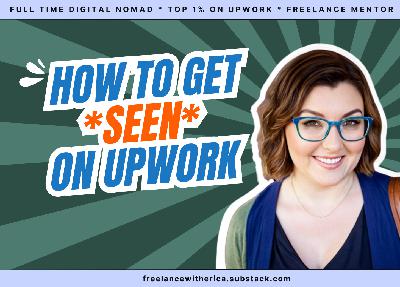
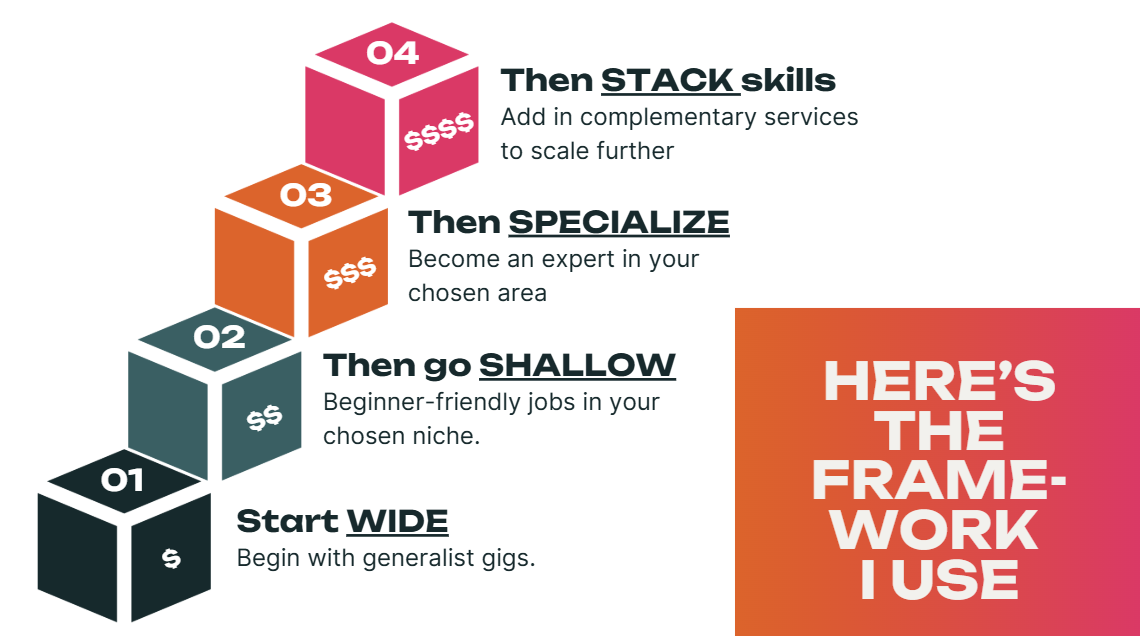
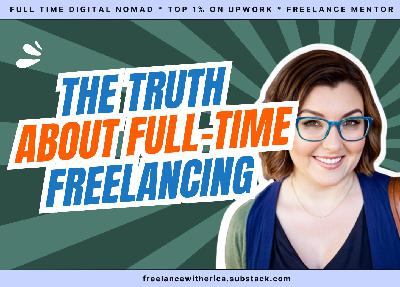
![The "Why Isn't Anyone Responding?!" to My Upwork Proposals [FREE CHECKLIST] The "Why Isn't Anyone Responding?!" to My Upwork Proposals [FREE CHECKLIST]](https://s3.castbox.fm/8f/02/f3/3f9530992ccf57f8fbe086f721d6783290_scaled_v1_400.jpg)


